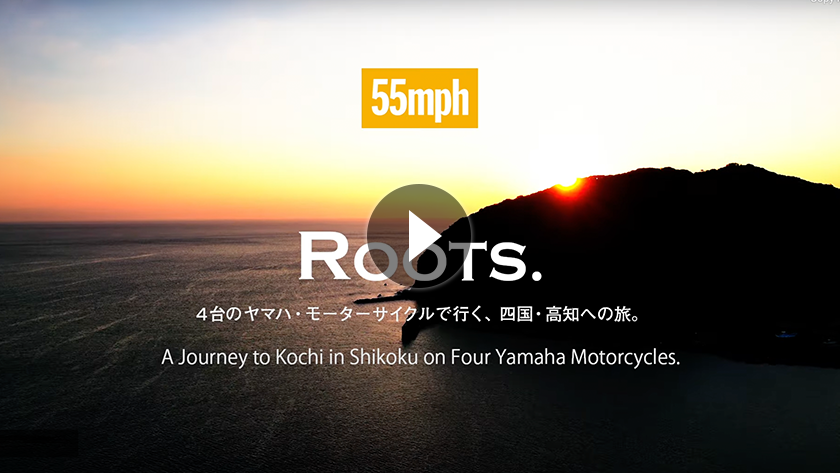55mph - Roots. Vol.04
Rowland Kirishima and Keisuke Kawanishi's grand touring on a Yamaha TRACER9 GT to Kochi for 6days.

Vol.4 Visiting Yamaha Motor’s Beginnings
The restrictions the COVID-19 threat has placed on us has generated within just about everyone a longing for the freedom to go wherever whenever we want. With a faint light finally beginning to appear at the end of the long proverbial tunnel, here we are looking to go on a motorcycling adventure, a grand tour from Tokyo to Kochi in Shikoku and back. It’s also a journey of rediscovering our roots as motorcyclists, something that is on the verge of being lost from day after day of being “garaged” due to the pandemic.
Hamamatsu: The Birthplace of Yamaha Motor
It was the fourth day of our 2,000 km journey on four bikes from Tokyo to Tosa in Kochi Prefecture and back. That morning, we set off homeward for Tokyo. We embarked on this trip to trace Roland ‘Rowly’ Kirishima’s roots in Shikoku, and with the tripmeter now reading 1,300 km, we were fully into the final half of our journey. However, I didn’t want to make the return trip a monotonous slog back, for what could be more boring? So instead, we decided to stop by and visit the roots of the Yamaha bikes we were riding.
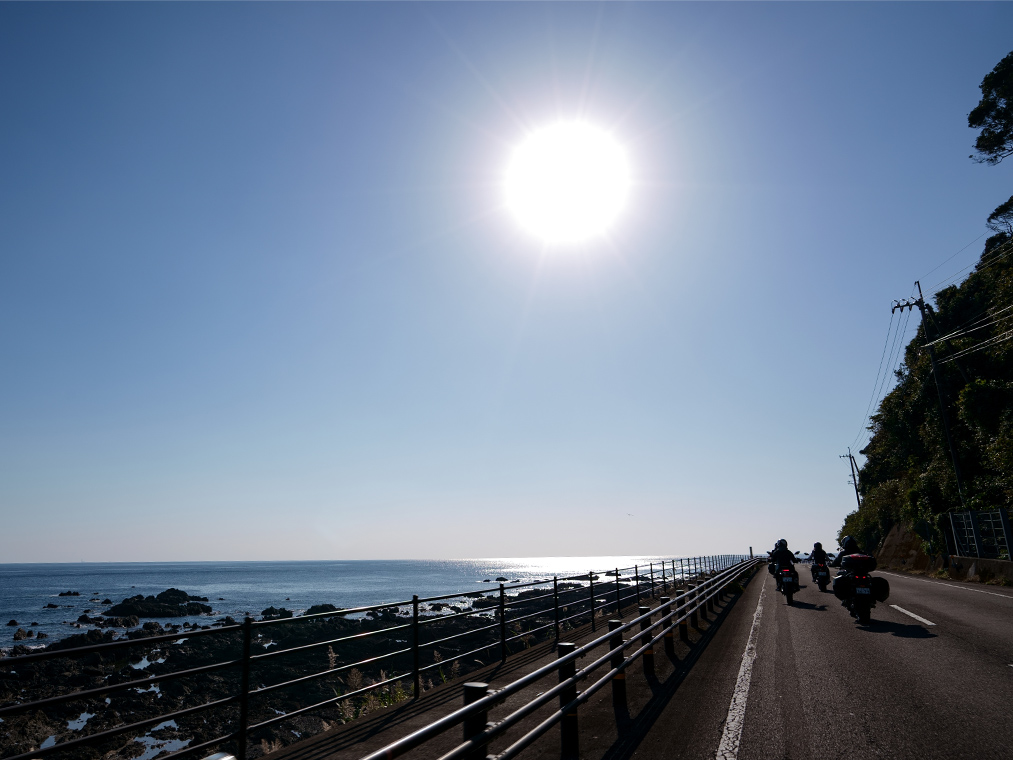
The origins of the Yamaha brand stretch back to 1889 in the middle of Japan’s Meiji era (1868–1912) when Torakusu Yamaha founded Yamaha Organ Manufacturing Company in Hamamatsu, Shizuoka Prefecture. Yamaha was an engineer and had succeeded in manufacturing Japan’s first organ. The company was reorganized as Nippon Gakki Co., Ltd. in 1897 (today’s Yamaha Corporation) and became known for manufacturing pianos and numerous other musical instruments. However, the company’s engineering prowess led to its transformation into a munitions factory to manufacture aircraft propellers for a time.
After WWII, the company went back to making musical instruments and it was around that time that the machine tools, knowledge, and techniques the company acquired through propeller manufacturing were repurposed for peacetime industry and motorcycle development and production began. Then in 1955, Nippon Gakki’s motorcycle divisions were spun off to create an independent motorcycle manufacturer: Yamaha Motor. We decided to stop in Hamamatsu, where the company’s story began.
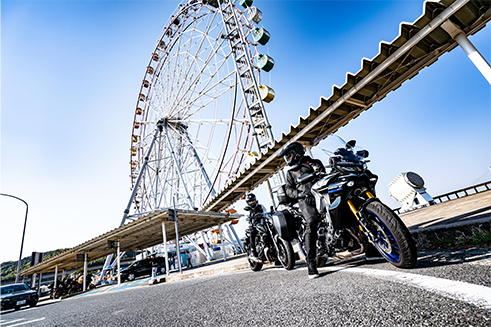
The trip from Tosa to Hamamatsu is still nearly 600 km even when taking the shortest route by highway, making this the longest ride on our trip. Since we had already been riding for three days straight now, the fatigue was starting to set in. That said, we were still able to travel safely and this was not only thanks to the comfort and reliability of our Yamaha mounts but also to another incredible helper that was along for the ride. We all had Midland BTX2 Pro S Bluetooth intercoms fitted to our helmets to allow the four of us to talk at the same time. It was great to be able to communicate with each other while riding, and in addition to being able to convey route information to everyone, you can share what you see and feel in the moment with your touring comrades and this effectively multiplies the fun of the trip. Riders regularly using intercoms when touring in a group will surely know what I’m referring to. As the four of us plowed the long stretch to Hamamatsu, our random conversations helped keep us focused and the onset of boredom at bay.
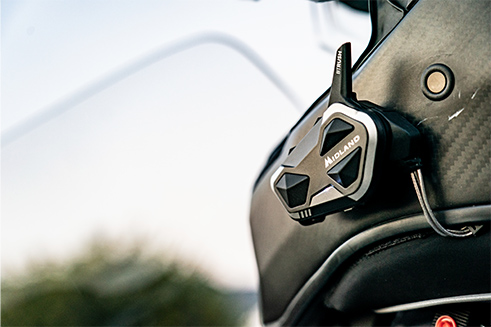
Boating on Lake Hamana
The day after arriving in Hamamatsu, we were in a buoyant mood because the plan for the day had us riding something other than a motorcycle. We headed to Yamaha Marina Hamanako on the shores of Lake Hamana, a brackish lake—a lake where freshwater and seawater mix—located west of Hamamatsu proper, to go for a boat ride.
Yamaha Motor not only makes motorcycles but also four-wheeled vehicles like ATVs and racing karts, snowmobiles, personal watercraft, and various other vehicles for the land and sea. Among them, the company’s boat manufacturing history is long, with Yamaha beginning production of FRP-hulled motorboats in the early 1960s, not long after the company was founded. Today, Yamaha’s marine products business encompasses outboard motors, personal watercraft, and other marine vehicles, and is a core business that stands right alongside its motorcycles.
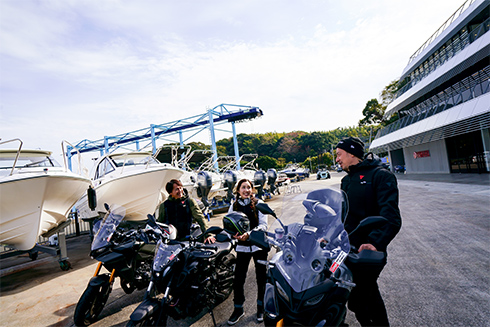
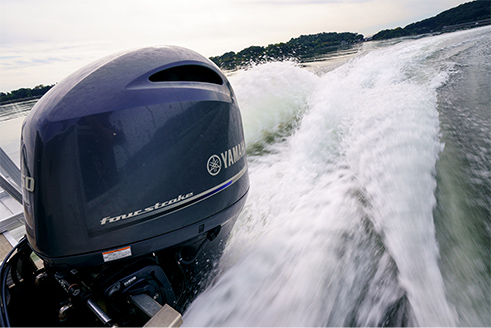
In fact, both Rowly and I have been interested in boats for the last few years and got our boat operator licenses. The feeling of piloting a boat is somewhat similar to riding a motorcycle as you cruise using the engine’s power where needed while balancing the hull and leaning to make turns. In that respect, I can’t help but feel motorcyclists have an innate affinity for or attraction to boats.

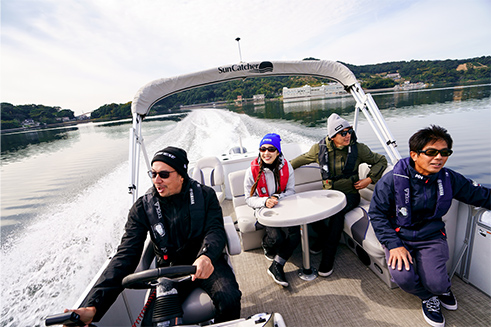
In Japan, Yamaha Motor runs a membership-based boat rental and charter service called “Sea-Style.” So even if you don’t actually own a boat, Sea-Style members can depart for a cruise from marinas all over Japan. We rented a boat from the selection at Yamaha Marina Hamanako and left port to enjoy a cruise out on the lake. While there are maritime rules and manners to follow, it’s incredibly liberating to simply go where you want on the water since there are no demarcated routes or lanes. In particular, the refreshing feel of the wind hitting your face is simply unmatched, even by motorcycles or convertibles out on the road. After enjoying our morning cruise until early afternoon, we had a late lunch and headed to Hamamatsu’s eastern neighbor and Yamaha’s hometown of Iwata.
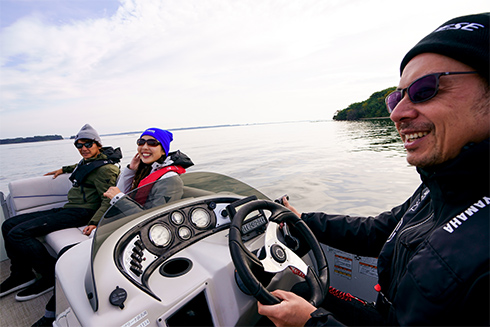
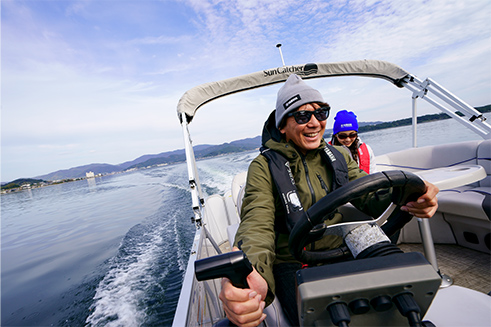
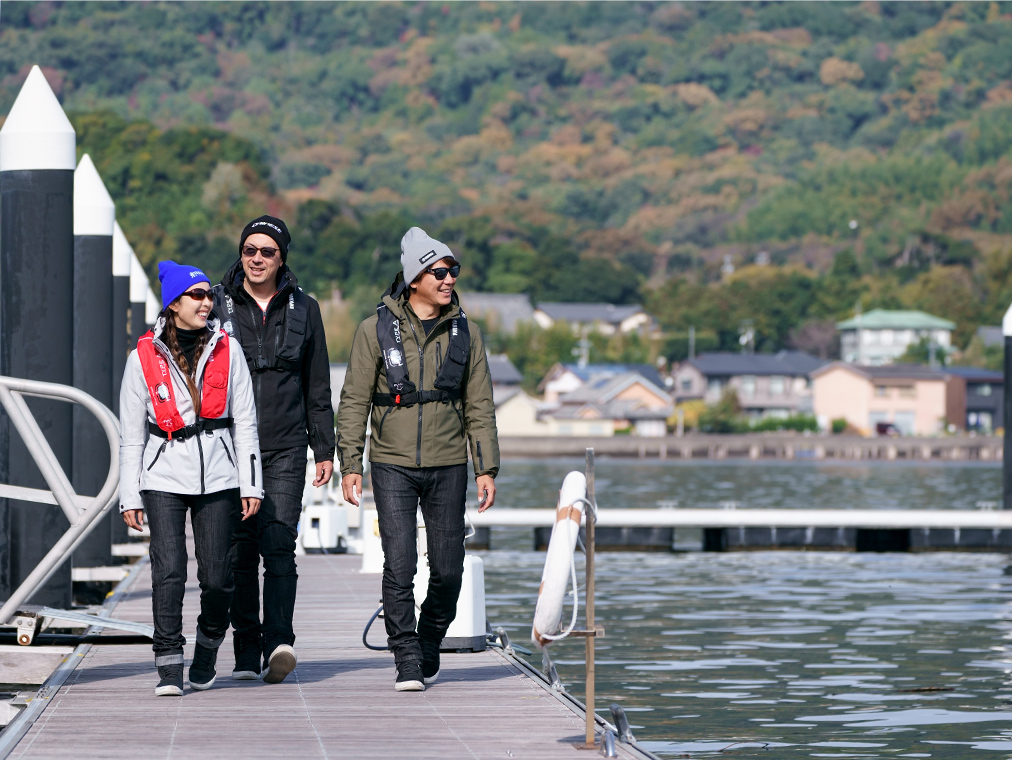
The Unique Style of Yamaha at Katsuragi Hotel Kitanomaru

Since moving from Hamamatsu in 1972, Yamaha Motor has been based in the city of Iwata and we visited the company’s corporate museum located at its headquarters, the Communication Plaza. The facility showcases all kinds of historical models, beginning with Yamaha’s first motorcycle, the YA-1, produced in 1955. During our visit, a special exhibition was on that displayed all of the YZR-M1 MotoGP racebikes ridden by Valentino Rossi, who retired from the sport in 2021. Learning the roots and history of the brand like this generates greater attachment to and pride in your own Yamaha, and our stop at the headquarters was a wonderful detour to take on the tail end of this journey.
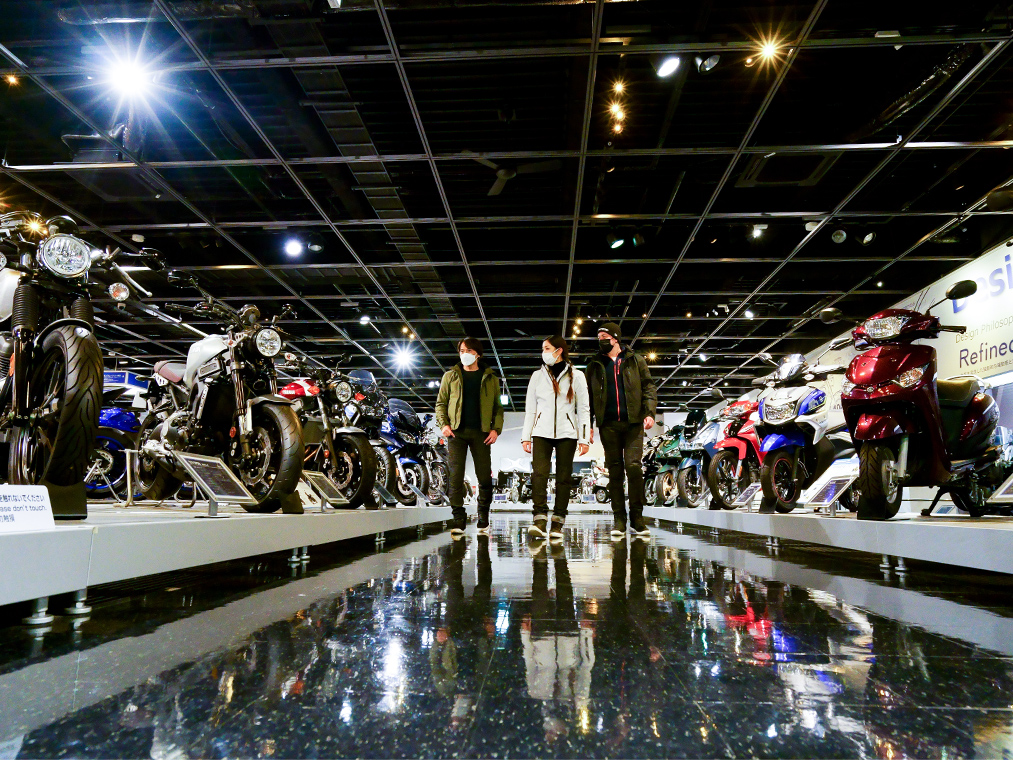
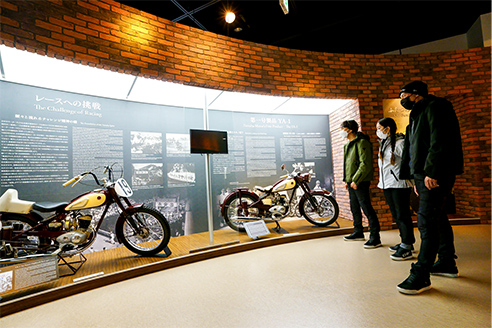
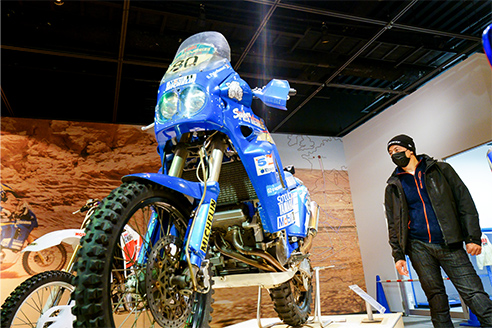
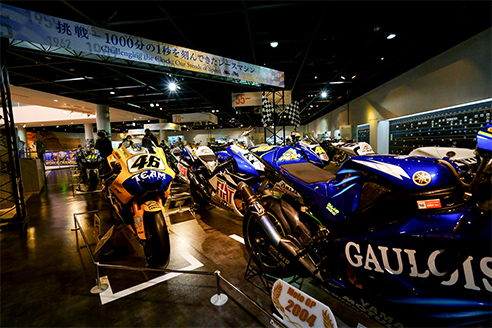
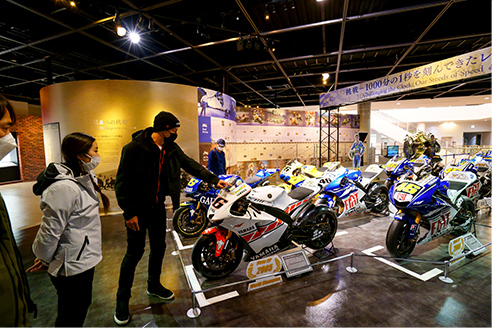
For the last night of the trip, we managed to secure rooms at a very special location: Katsuragi Hotel Kitanomaru in the nearby city of Fukuroi. The facility itself was constructed under the careful direction of Nippon Gakki’s fourth president and Yamaha Motor founder, Genichi Kawakami. Its beautiful Japanese architecture is the result of transplanting seven kominka traditional Japanese homes from far off locations like Niigata, Toyama, and Ishikawa all the way to Shizuoka to create the hotel. When you arrive and park your motorcycle in front of majestic buildings like this that simply radiate history, it almost feels like you are a samurai arriving at a hatago travelers inn for the day and are resting your trusty steed.
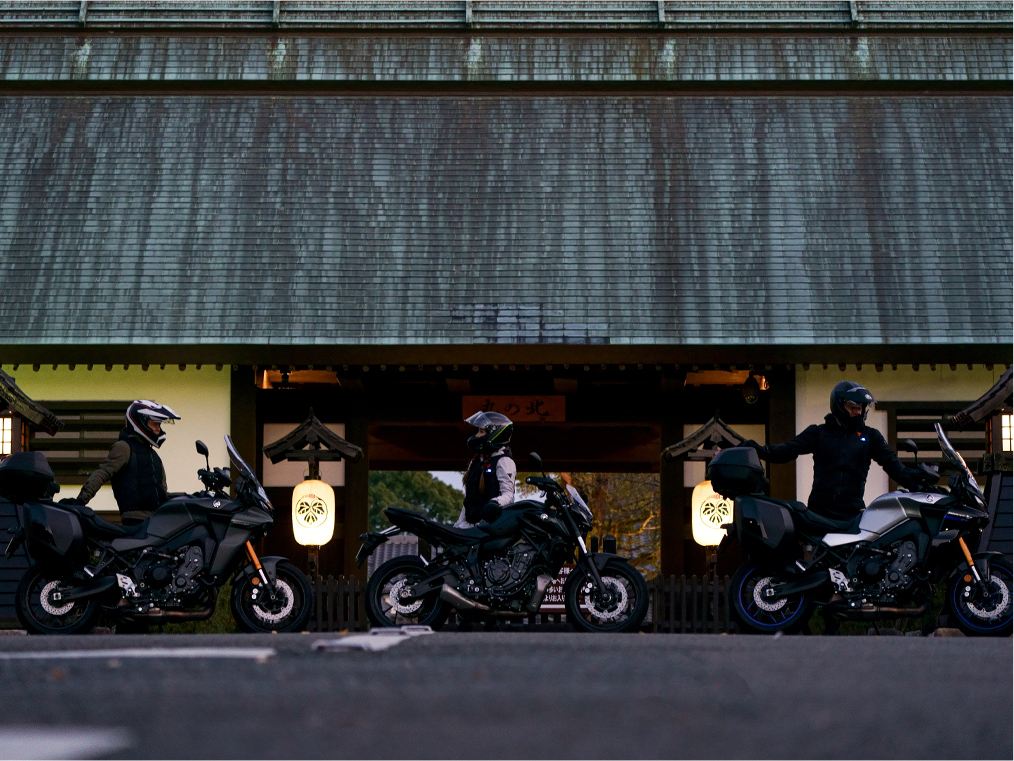

That night, we delighted in the evening’s meal that was full of locally sourced seasonal ingredients and conversed in an annex where Kawakami was said to often come and listen to music when he visited the resort in his private time. The next day, we enjoyed playing half a round of golf at the Katsuragi Golf Club adjacent to the hotel.
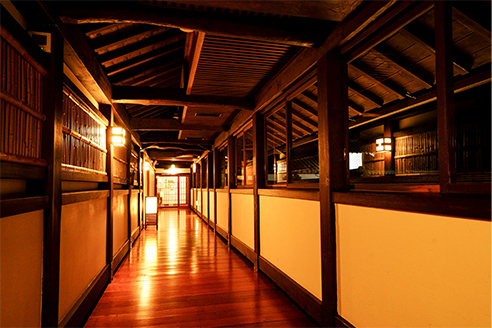

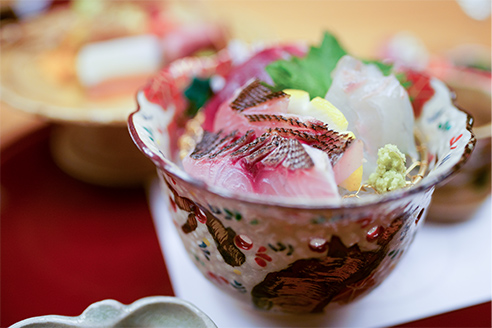
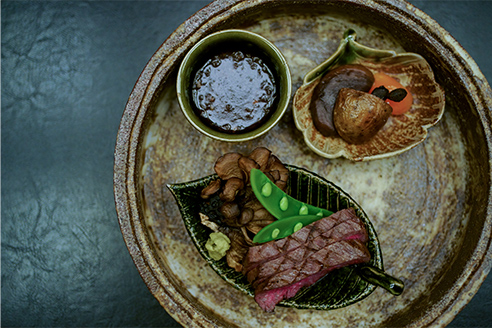
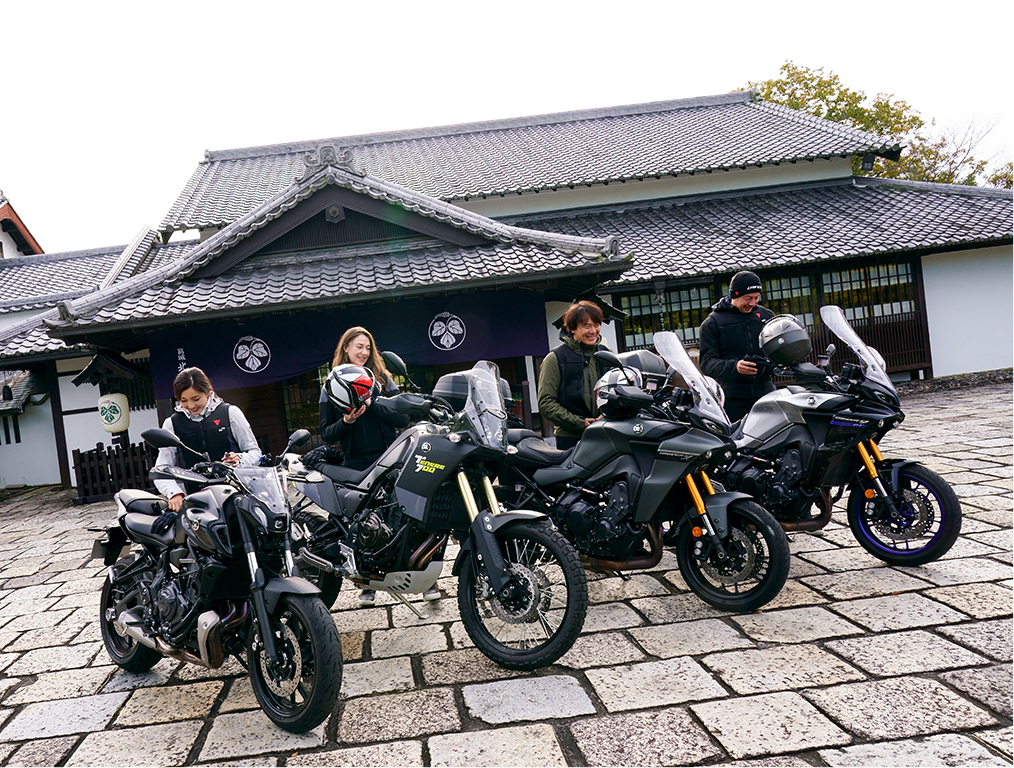

This is one of the most prestigious courses in Japan and it hosts several professional tournaments. Spending a night with an exquisite dinner and then playing golf the next day at Katsuragi was an extravagant experience for us to say the least, but it undoubtedly gave us a newfound understanding of the unique style of Yamaha that flows through the resort and altered how we looked at our motorcycles.
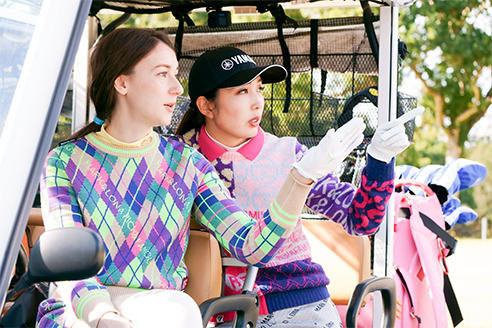
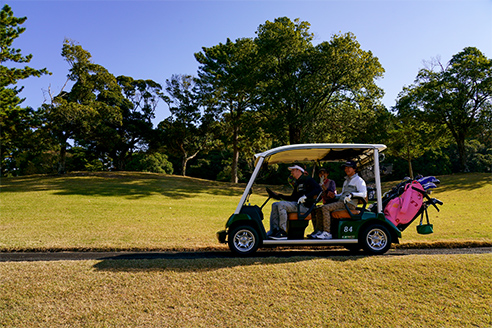
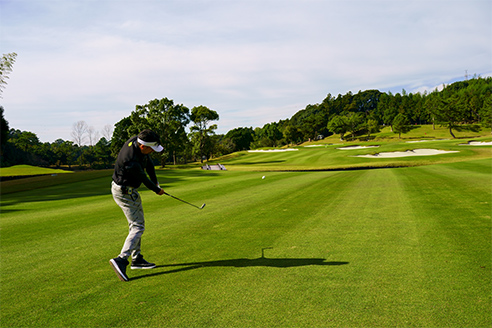
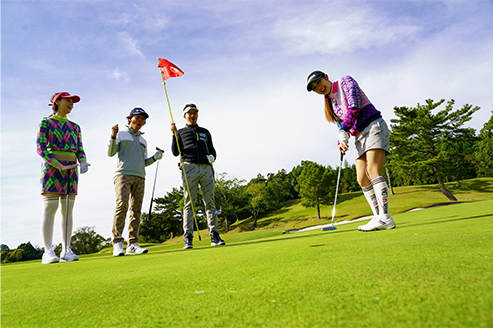
Our Six-Day, 2,200 km Journey Ends
Genichi Kawakami was said to firmly believe that musical instruments are for enjoying your free time, and that as a maker of musical instruments, Yamaha has a responsibility to also provide places and spaces to do that. I feel this same belief holds true with motorcycles. Enjoying a motorcycle is not just a matter of acquiring one, but also about where you go on it and the kind of time you spend with it. That’s what’s important.
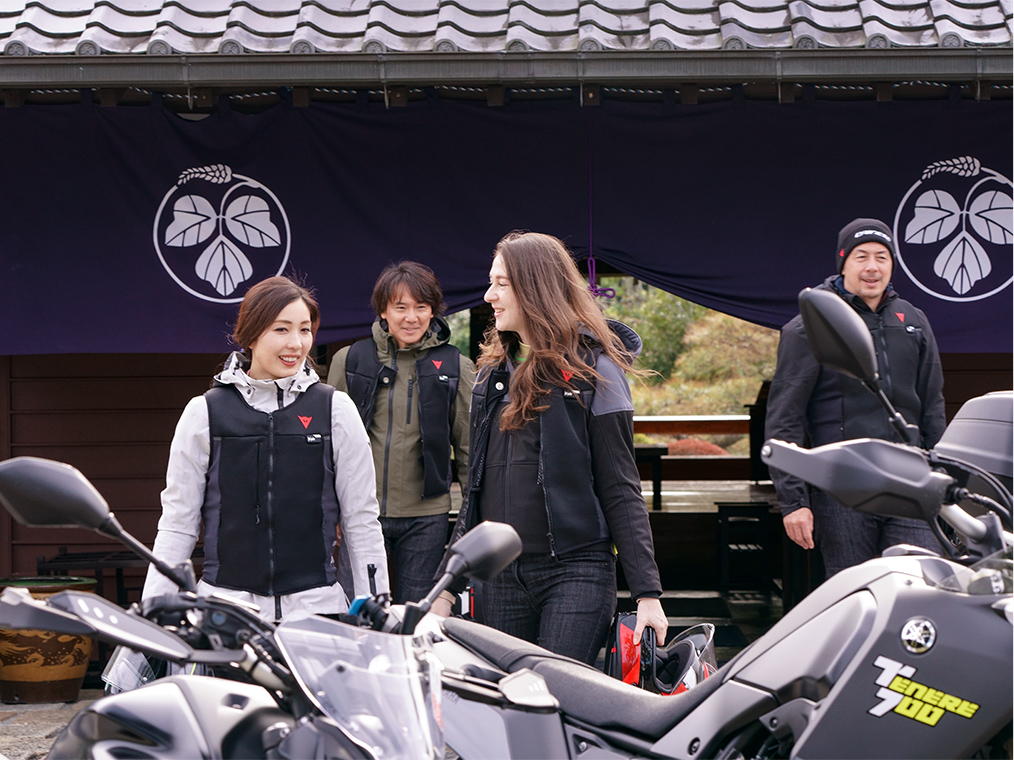
From the boat cruise, our accommodations, and going golfing, we were able to both see and enjoy the many faces of Yamaha on our way back, fully experiencing the roots and spirit that dwell in its motorcycles.
On the evening of the sixth day, we finally arrived back in Tokyo’s Marunouchi district. The sun was long gone and the Christmas lights on Marunouchi’s main street of Nakadori were up and lit. As people on their way home from work hurried past, the four of us reached the finish line of our grand tour with the tripmeter of the Tracer 9 GT indicating nearly 2,200 km. As we all looked back on our intense six-day journey, we shared feelings of both accomplishment and a slight sadness that it was over.
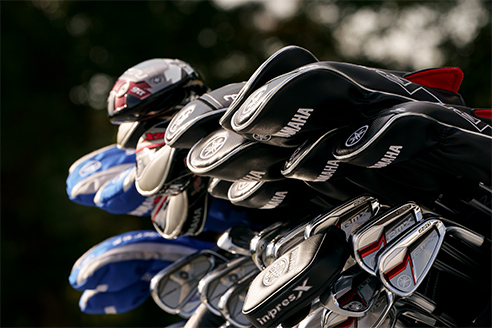
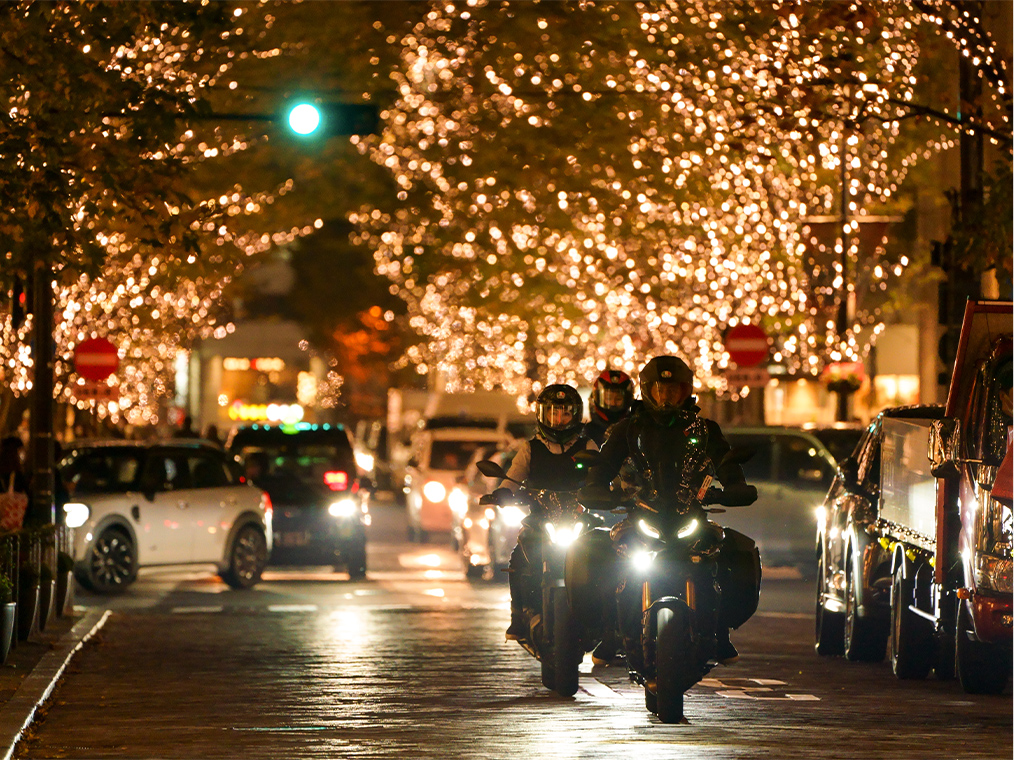
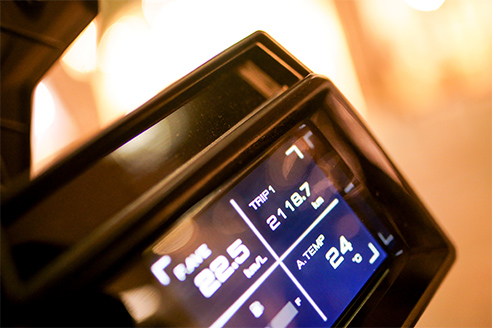
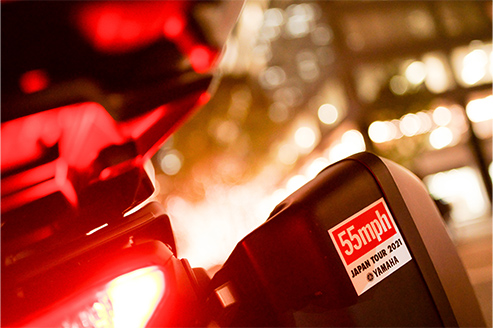
This tour was akin to opening the window for some fresh air to escape—if temporarily—the predominately shuttered life the pandemic has thrust upon us all. But at the same time, it was a journey to rediscover and reaffirm our roots as motorcyclists, something we were in danger of losing sight of.
Once the world has finally broken free from the virus’ shackles and regained its freedom, we hope to set off again on another two-wheeled journey to beautiful destinations, with the speedometer right at 55 mph.




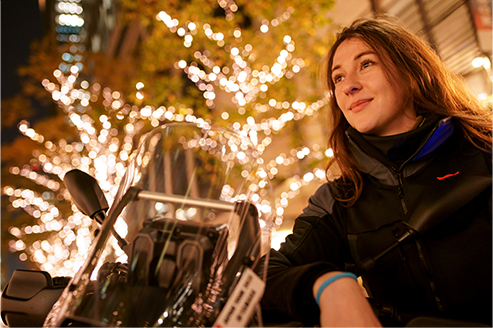
Special thanks to
Rowland Kirishima
Keisuke Kawanishi
Reina Tomomura
Tanya Parshina


Rowland Kirishima
Born in 1968. Graduated from New York University College of Art - Department of Photography - and became a photographer. He is active mainly in magazines and advertising photography. Currently, he is a technical advisor for CyberHuman Productions. Rowland developed an interest with motorcycles during his school days and participates in races in both on & off-road competition. He also competed in the Dakar Rally in 2007.
Keisuke Kawanishi
Born in 1967. Graduated from Waseda University and become an editor at the NAVI magazine after working for an advertising agency. He started motorcycle magazines "MOTO NAVI" and "NAVI CARS” working as the senior editor.
He currently works as a freelance motor journalist, editor and producer.
Staff
Photographer
Toru Hasegawa
Director & Videographer
Yuma Tarora
Wick Grow. Inc.
Coodinator
Yoshiki Hayashi
Gen Inc.
